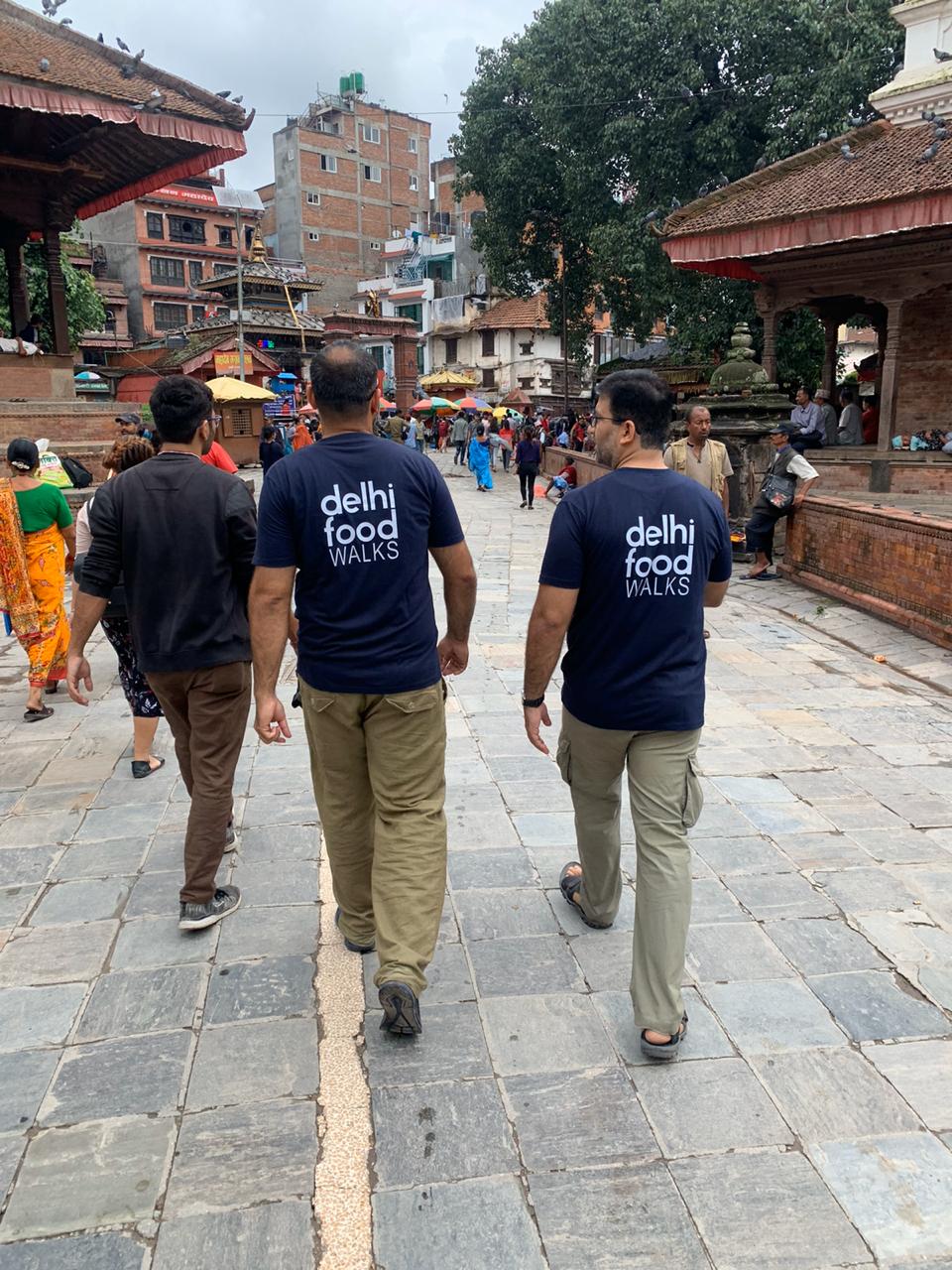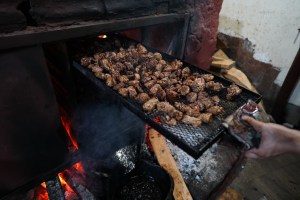
When you think of the most ubiquitous street food in Nepal, there flashes the sight of piping hot momo that warms the cockles of your heart and makes you drool. If you take a stock of the culinary scene on the busy streets and alleys and you will get to fathom the phenomenal popularity of this dish. Such is the craze, especially among the young crowd that that momo have attained the status of unofficial national dish of the country. Hence we are on a momo trail to taste the incredible variety that is available locally. To guide us on this fascinating culinary trail featuring this quintessential Nepalese dish we are joined by Kamal who is a momo aficionado too.
Our first stop was Ghangri Cafe at Jhamshel, Kathmandu. This place is famous for what is known as open momo or Sui Mui momo. Available in chicken, pork and buff, they are loved for their unique flower-like shape and of course their unparalleled taste. One bite is enough to fall in love with these open momos. As the three different chutneys accompanying the delicacy reaches the stuffing inside the momo through the open ends it infuses them with a vibrant character and transforms them into tiny bombs of flavours. Apart from the taste what we loved about them was that the juiciness is very much intact in these momo.
The next stop was Mahabharat momo in Patan Dhoka. Before trying their popular Jhol momo, we first witnessed the making of the momo in the kitchen. This kind of momo originated from the Newari community. It was fascinating to watch a team of young workers efficiently doling out momo in lightning speed. We then tried a plateful of freshly steamed momo that is to be eaten with the creamy and spicy sesame, peanuts, soyabean and fresh coriander based broth. The momo and the broth are served separately and one has to dunk them in the broth and have them together to get the real feel of the combo.
Next was the turn of another batch of jhol momos at Narayan Dai Ko Mashangali. This variant was completely different from the previous Jhol Momos as the broth here was thin, spicy and tangy due to the use of a local sour fruit called Lapsi Nepali Hog Plum (Choerospondias axillaris). They serve you fresh chicken, mutton or buff momo in a bowl which you need to submerge with ladle full of this sour, runny broth from the huge clay vessels kept at the counter and enjoy. The taste was indeed very unique and irresistible. The momo were perfectly done and the broth just accentuate the whole flavour profile.
Our next destination was a Sinka restaurant which is famous for Chaat momo and the unique Sizzler momo. The first one is zesty, sweet and sour combination of fried chicken momos that is topped with beaten curd, chutneys, peanuts, onions and chaat masala. This chat was quite unique and flavoursome. Trying a Chaat with fried momo as the base was a novel experience for us. The second dish is a sizzler platter comprising of steamed chicken momos, stir fried noodles and stir fried veggies,. This one was flambeed with Khukri Rum and had very interesting Continental flavours that came from the various herbs used in the dish.
Our final destination in the trail was a quaint and cosy eatery named Noyoz. Here we met the very graceful food connoisseur and entrepreneur, Susan Karmacharya who was there to guide us more about the momo culture in Nepal. Here we tried a couple of their bestsellers like the smoked pork and aloo nimki along with two kinds of momo- the kothey momo and steamed chicken momo in white sauce. The smoked pork was succulent, fatty, flavoursome, smoky and hearty. Aloo nimki, a popular Nepalese snacks, with multitude flavours was a welcome change.
It was such a memorable momo journey where we relished some of the best momo from the city and met some really amazing people who are serving it to the masses. Heartfelt thanks to Kamal and Susan for their insights that resulted in such a gratifying trail. Till next time Keep walking and keep exploring.











